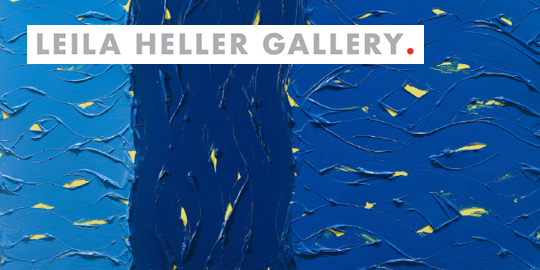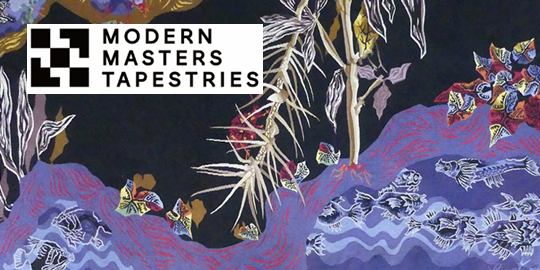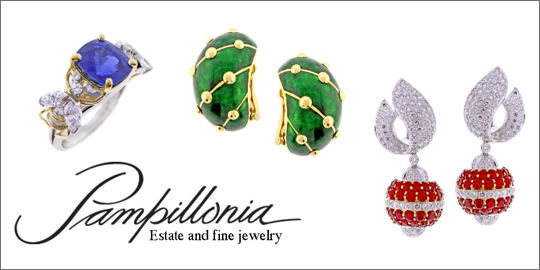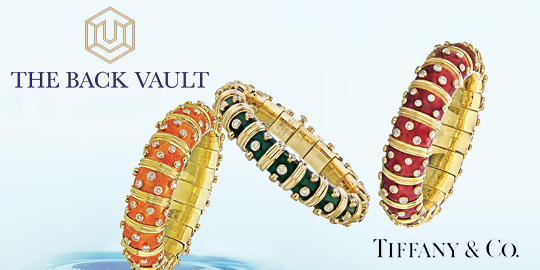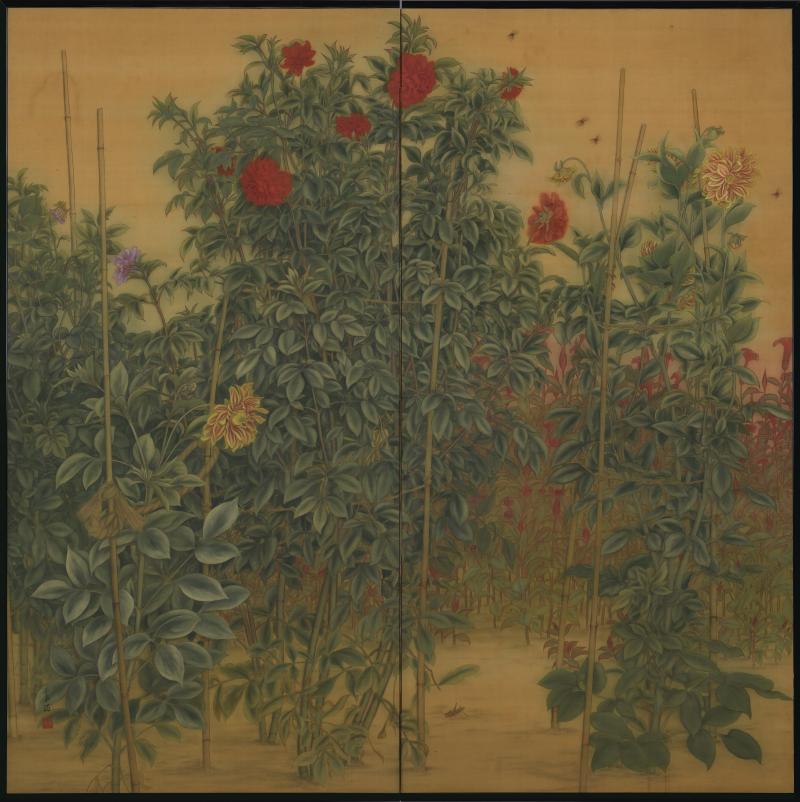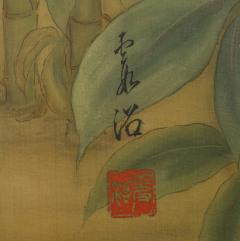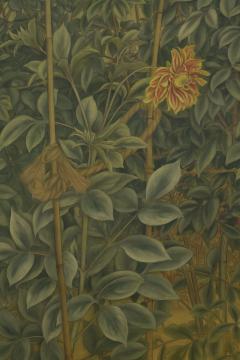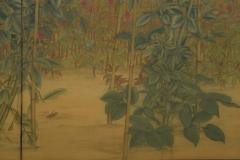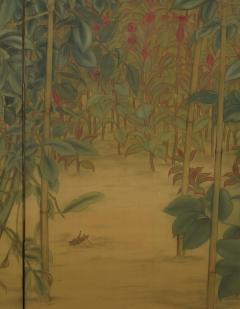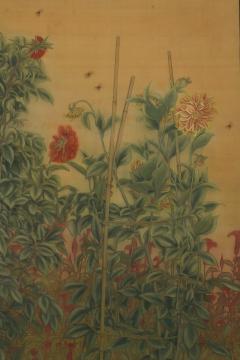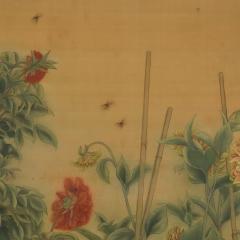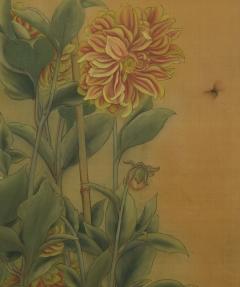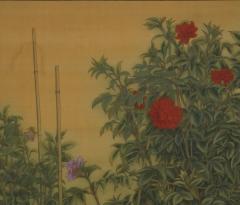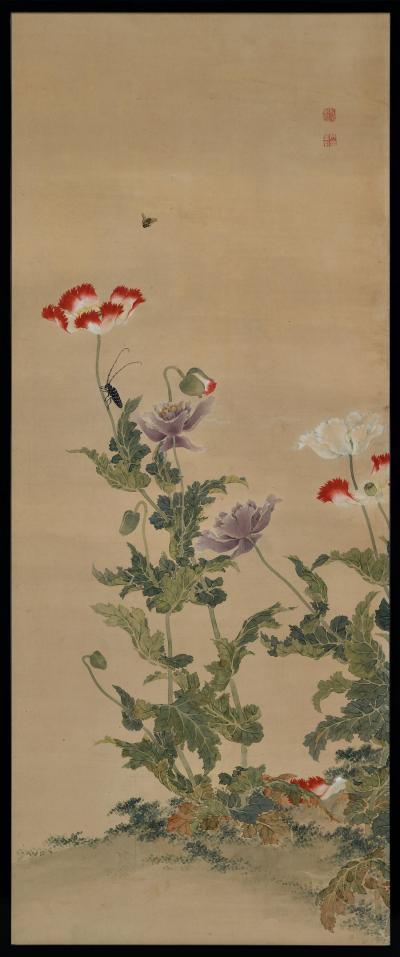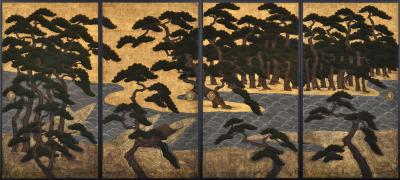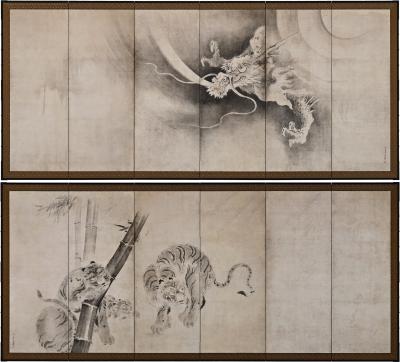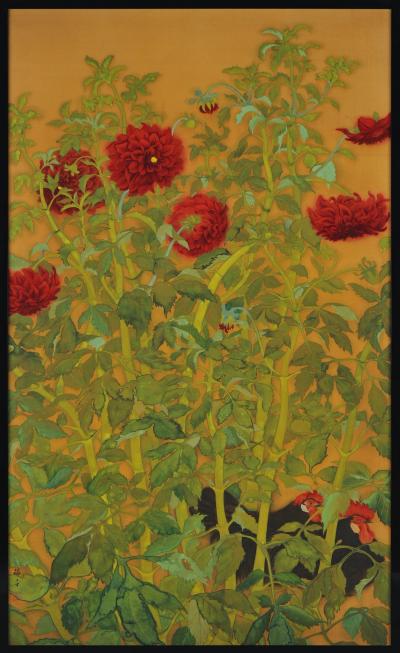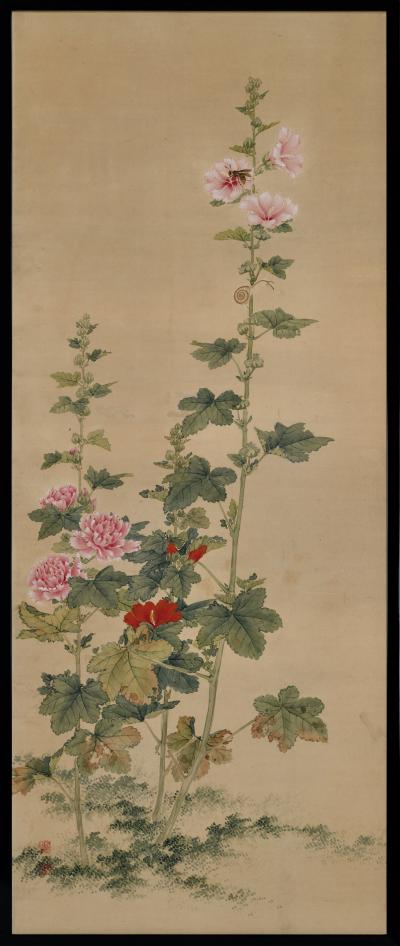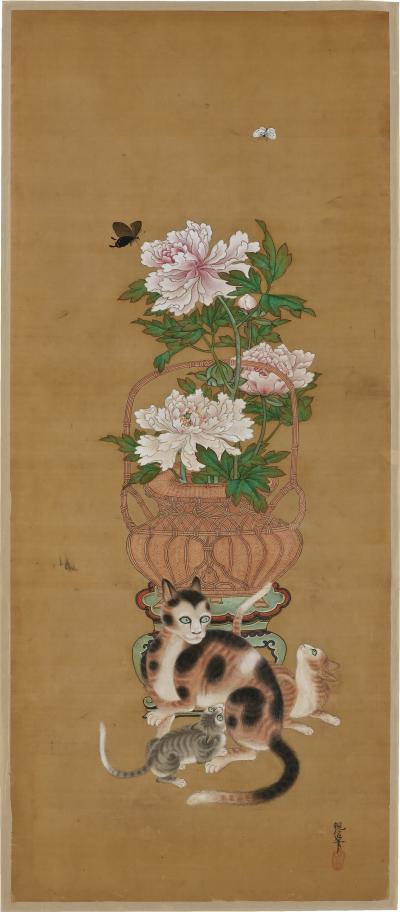- FINE ART
-
FURNITURE + LIGHTING
Shop By Category
Shop By Artist
- NEW + CUSTOM
- DECORATIVE ARTS
-
JEWELRY
Shop By Category
Shop By Artist
- INTERIORS
- MAGAZINE
Listings / Fine Art / Paintings / Still Life
Offered by:
Kristan Hauge Japanese Art
2-32 Saishoji-cho, Okazaki, Sakyo-ku,
Kyoto 606-8342 , Japan
Call Seller
81757515070
Showrooms
Circa 1920. Taisho era Japanese Nihonga Screen. Dahlias & Cockscomb.
$ 28,000
-
Tear Sheet Print
- Save
- BoardAdd to Board
-
-
Description
Kawabe Kasho (b.1892)
Dahlias & Cockscomb
Taisho era. Circa 1920
Two-panel Japanese Screen. Mineral pigments and ink on silk.
Dimensions: H. 171 cm x W. 171 cm (67.5” x 67.5”)
Price: USD 28,000
This exquisite two-panel Japanese folding screen, painted on silk with mineral pigments and ink, presents a vivid summer scene of flowering dahlias and cockscomb. Executed in the refined Nihonga tradition of the Taishō period (1912–1926), the composition is both ornate and complex, showcasing the artist’s meticulous attention to detail and reverence for nature. Nearly every inch of the painting surface is utilized, creating an immersive visual experience that captures the opulence of a midsummer afternoon.
Rendered with striking realism, the screen radiates an extravagant naturalism that flourished in Japanese painting during the early 20th century. The interplay of sunlight and shadow brings the lush foliage and blossoms to life, highlighting their delicate textures and vibrant hues. The scene pulsates with energy—bees hover eagerly around the dahlias, drawn to their rich colors and intricate forms. This pairing of dahlias and bees was a common motif in Taishō-era art.
The composition is elegantly upright, punctuated by the bold presence of brilliant blooms. The dahlia, an exotic import to Japan, first arrived during the early Meiji period (1868–1912). By the time of the Taishō era, these flowers had captured the fascination of Japanese horticulturists, who cultivated new varieties with passionate dedication. Dahlia-growing competitions became a nationwide phenomenon. They became a floral metaphor for exoticism and were frequently featured in Taishō-period art,
Softly receding into the background are the cockscomb flowers, whose velvety, undulating crests resemble a rooster’s comb. A member of the amaranth family, cockscomb thrives in full sun, and its distinctive, almost sculptural form adds a dynamic contrast to the dahlia’s soft, layered petals. Together, these flowers create a sumptuous tapestry of form and color, embodying the height of summer’s abundance.
Nihonga, meaning “Japanese-style painting,” emerged as a response to the rapid Westernization of Japan’s art scene. While absorbing select influences from Western art, Nihonga artists of the Taishō period remained devoted to traditional Japanese techniques, employing delicate mineral pigments and fine silk. This period saw an evolution in the Nihonga aesthetic, as painters experimented with new color palettes, innovative compositions, and refined brush techniques.
Kawabe Kasho (b.1892) was a Kyoto based Nihonga artist from the early 20th century. He is a graduate of both the Kyoto City School of Arts and Crafts and the Kyoto Municipal Special School of Painting. The artist and teacher Kawakita Kaho was his most significant influence. -
More Information
Documentation: Documented elsewhere (similar item) Period: 1920-1949 Condition: Good. Styles / Movements: Asian Art Incollect Reference #: 789521 -
Dimensions
W. 67.32 in; H. 67.32 in; W. 171 cm; H. 171 cm;
Message from Seller:
Kristan Hauge Japanese Art, based in Kyoto's museum district since 1999, specializes in important Japanese screens and paintings for collectors, decorators, and museums worldwide. Contact us at khauge@mx.bw.dream.jp or +81 75-751-5070 for exceptional access to Japanese art and history.
Sign In To View Price
close
You must Sign In to your account to view the price. If you don’t have an account, please Create an Account below.
More Listings from Kristan Hauge Japanese Art View all 56 listings
No Listings to show.
- 17th Century Japanese Screen Pair| Hawks on Plum & Pine | Soga Nichokuan
- Mid 19th Century Framed Japanese Painting. Longhorn Beetle & Poppies.
- Mother’s Breast (Chichi) 1844. Japanese scroll painting.
- Circa 1700 Japanese Sliding Door (Fusuma) Set. Pine Trees on the Seashore.
- urtledoves in a Peach Tree | Nakamura Daizaburo
- Bamboo in Moonlight. Japanese scroll painting by Gamo Rakan (1784-1866)
- Playful Cat | Hirose Toho (1875-1930) | Japanese scroll painting
- 17th Century Japanese Screen Pair. Tiger & Dragon by Kaiho Yusetsu
- Korean Grapevine & Squirrel Scroll Painting | 17th Century, Joseon period.
- Willow and Sparrows | Japanese Taisho era framed silk painting | Circa 1920
- Dahlias and Roosters | Tanaka Tessen (b.1890) | Taisho period silk painting
- Amaranth & Rooster | Circa 1930 | Japanese scroll painting
- Mid 19th Century Framed Japanese Painting. Snail, Wasp & Hollyhock.
- 19th Century Japanese Silk Painting by Kano Chikanobu. Cats & Butterflies.
- 17th Century Japanese Screen Pair| Hawks on Plum & Pine | Soga Nichokuan
- Mid 19th Century Framed Japanese Painting. Longhorn Beetle & Poppies.
- Mother’s Breast (Chichi) 1844. Japanese scroll painting.
- Circa 1700 Japanese Sliding Door (Fusuma) Set. Pine Trees on the Seashore.
- urtledoves in a Peach Tree | Nakamura Daizaburo
- Bamboo in Moonlight. Japanese scroll painting by Gamo Rakan (1784-1866)
- Playful Cat | Hirose Toho (1875-1930) | Japanese scroll painting
- 17th Century Japanese Screen Pair. Tiger & Dragon by Kaiho Yusetsu
- Korean Grapevine & Squirrel Scroll Painting | 17th Century, Joseon period.
- Willow and Sparrows | Japanese Taisho era framed silk painting | Circa 1920
- Dahlias and Roosters | Tanaka Tessen (b.1890) | Taisho period silk painting
- Amaranth & Rooster | Circa 1930 | Japanese scroll painting



